Dell CFO Tom Sweet On Why Going Public Will 'Catapult' Dell Forward
‘From a channel perspective, [going public] should open up additional velocity as we think about how do we more effectively go to market and position integrated solutions,’ says Dell Technologies CFO Tom Sweet in an exclusive interview with CRN.


Dell CFO Tom Sweet On Why Going Public Will 'Catapult' Dell Forward
‘From a channel perspective, [going public] should open up additional velocity as we think about how do we more effectively go to market and position integrated solutions,’ says Dell Technologies CFO Tom Sweet in an exclusive interview with CRN.
Tom Sweet On The Benefits Of Dell Going Public In 2019
Dell Technologies plans to "catapult" itself ahead of the competition as a public company through an improved capital structure that will accelerate VMware integrations, enable financial flexibility for future acquisitions and provide sales "velocity" for channel partners, said Dell CFO Tom Sweet in an exclusive interview with CRN.
"Think about the fact that we at a Dell Technologies level own 81 percent of VMware, but yet we are sharing that VMware economic stake with this Class V tracker stock. The dynamic that it created was putting friction in the system in terms of our capability to drive integrated solutions effectively across the family of companies," said Sweet, a 21-year Dell veteran who as executive vice president and CFO helped Dell pull off one of the largest private equity buyouts in history, the $67 billion acquisition of EMC, and now Dell's return as a public company.
On Dec. 11, more than 61 percent of shareholders approved Dell Technologies’ bid to become public though a VMware stock swap deal. Dell Technologies Class C shares are set to trade on the New York Stock Exchange as the symbol DELL on Dec. 28, 2018. Sweet talks to CRN about transitioning to a public entity, activist investor Carl Icahn, and Dell's strategy to beat the competition in 2019.
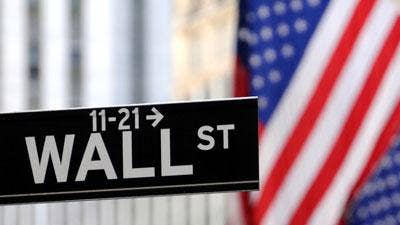
Why did Dell Technologies decide to go public again?
We have a very complex capital structure, we have multi-classes of stock and we have different layers of debt. But the whole goal here is to align economic and equity and trust. Today, think about the fact that we at a Dell Technologies level own 81 percent of VMware, but yet we are sharing that VMware economic stake with this Class V tracker stock. The dynamic that it created was putting friction in the system in terms of our capability to drive integrated solutions effectively across the family of companies. Why? Just think about the fact that we can sell [customers] storage arrays, we can sell them software-defined, hyper-converged infrastructure, but depending on what solution we drove, those margin dollars moved around the company.
For example, 'I'm not going to sell you a primary storage array, I'm going to sell you a software-defined vSAN solution.' I'm essentially not putting margin dollars at the Dell level, I'm putting them on the VMware level. Therefore, I'm sharing that margin pool among both the Class A VMware holders as well as the tracker holders. I don’t want to overstate that it was a huge problem, but it was something we kept thinking about. We're going to have to clean this structure up, otherwise we're going to come to a point where we are not able to effectively do what we want to do. … It's been quite a journey over the last four or five months. I've talked to 200 investors four different times, but I think we have everybody lined up now.
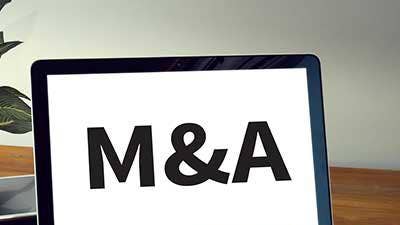
What are the biggest benefits of Dell Technologies going public?
We got the vote on Dec. 11, but what that means for us is we've cleaned up the capital structure, the Class V stock falls away and we've aligned economic and ownership interest so that everyone participates when Dell Technologies wins collectively together. It should drive more momentum in the business over time and it should provide us the ability to continue to build out solution sets that are more integrated. It should provide the opportunity to partner better across our ecosystem.
From a channel perspective, it should open up additional velocity as we think about how do we more effectively go to market and position integrated solutions. Because the world of today many times is, 'I don’t want three-tier architecture. I want a more simplified, less complex solution.' Therefore, VMware is a pretty significant part of that solution strategy for us. We're excited about the opportunity to clean up the capital structure. It's going to also give us some financial flexibility in the future around, 'How do we think about using stock as a currency in a future day for M&A activity?' There's nothing planned right now. It gives us incremental flexibility as we move forward.
How does going public give you M&A flexibility?
You get optionality, which is always helpful whether you want to use stock as a currency if you think it's the right value and the right trade, or you use cash or some combination. You think about a company of our size, approaching $90 billion, it makes sense.

How does a simplified capital structure help accelerate VMware integration?
It's going to help quite a bit. You look at the number of solution workstreams that we have going right now with VMware—whether it's around hyper-converged infrastructure or Workspace ONE in our client space or around what we're doing with vSAN and vSAN Ready Nodes—so across the spectrum you're going to see us accelerate a number of these integrated solutions. We're optimistic and excited about it. VMware is a great platform in the market in terms of their position in virtualized infrastructure, but you also think about what they're doing with VMware's NSX and the network, we have a lot of activity going on in the networking space. It's pretty exciting times.
What percentage of business will be traded on the public market versus what will still be held by Dell?
Depending on where final exchange ranges end up, it will be something in the range of 30 percent to 35 percent of the company that is potentially tradeable. It's not the largest ever, but it's a significant portion. It will be exciting. We'll have to see how it trades out of the gate. It's a new market. There's not a lot of happening in that period between Christmas and New Year's.
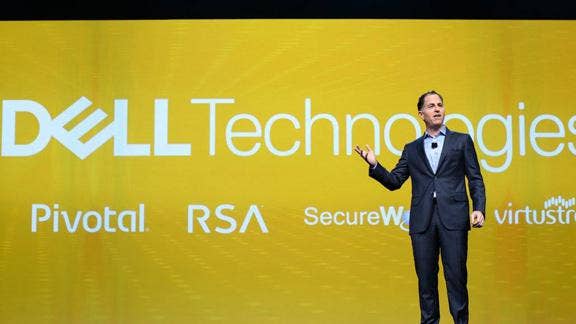
What advantages does this capital structure with Michael Dell and Dell owning most of the stock allow versus competitors that are owned more by the public?
Michael and Silver Lake are aligned with long-term vision. The feedback we've gotten back from customers and channel partners has been, 'It's great that you're going to go public, but please tell us that you're not going to change how you're running the business.' Meaning, run Dell for the long term and make the appropriate investments you think you need to make to position the business for the long term. So what do you need to do now to position the business for three to five years out—whether that's investment in technology, investment in coverage, investment in programs—and that's the way we've been running the business.
From a financial metric perspective, in the categories we play in—PCs, storage, the software stacks—in many of those areas the opportunity and addressable market is slow growth or flat. So you have to take share. If you want to grow, you have to take share. We pretty much run this business on the core principles of you have to grow and you have to grow profitably so that share you take and growth you drive is profitable growth. If you've been in the technology space for a while, you know you can grab a lot of revenue and not make any money or even lose some money. So you don't want to rent share, you want valuable share gain that drives profit that drives cash flow. That's what we look at. The key indicators of that is share gain relative to competition, share gain relative to market, net-new buyers, and building the buyer base.
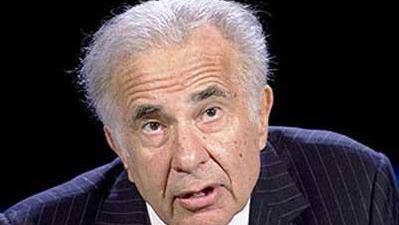
What's your thoughts on Dell and VMware investor Carl Icahn (pictured)?
Carl is one of a number of activists that came into this stock. He's good at what he does, let's be honest, but ultimately at the end of the day he decided it wasn't a fight that was going to be winnable once we modified the transaction structure. He's moved on to other things.
What is Silver Lake's investment strategy with the new public Dell Technologies?
Silver Lake is completely in. They're long-term holders. They reaffirmed their long-term position in us. If you looked at some of their press releases, they have the approval now to transfer some of their earlier investments in Dell to a new fund that they created that is a long-term fund so it's not time-sensitive and time-bound. They have repeatedly told us that they're in for the long term.
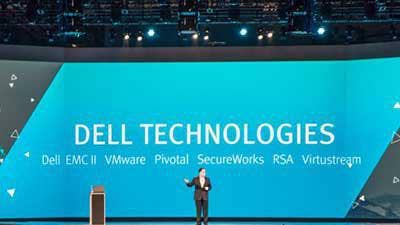
Can you talk about the advantage of Dell Technologies’ scale and how much of a competitive weapon it is?
The scale of the size of the company and the amount of R&D we're spending—which is approaching $4 billion to $4.5 billion a year across the family of companies, meaning over the past four to five years we spent between $18 billion to $20 billion on R&D—it gives us leverage in terms of the opportunity to explore new solution capabilities to innovate because IT and technology is all about innovation. The scale and our ability to touch and get differentiated input from our supply base and customers to understand what they're truly looking for is pretty important.
You couple that with our Dell Technologies Capital activity—which is our venture fund that has roughly 100 investments going on right now in emerging technology areas like next-generation storage and security— what we're trying to do is not only are we looking at internal innovation but making sure that we're not blind to what the external innovation engine looks like in technology centers across the globe. It's remarkable the breadth and depth that this company has at this point. Roughly $90 billion in revenue, 145,000 employees across the globe in 180 countries, massive supply chain, huge customer footprint, but what's exciting is all the opportunity out there. We're big, but the opportunity is still there to grow. If you look at our long-term guidance framework over the next four to five years, we're looking at a compound annual growth rate of between 4 [percent and] 6 percent, which is pretty big for a company of our size. … Whatever the market dynamic is, we want to grow at a premium to the market—that's how we run and plan the business.

How big of a year is 2019 for the new publicly held Dell Technologies?
It's a year we should use to catapult forward. If you think about what we've done over the last 27 months of putting these two big companies of Dell and EMC together—getting the go-to-market motion and channel programs set—we're still tuning, but we have a lot of the heavy lifting done. We've put a lot of investment in the business over the last 18 to 24 months in terms of capacity—solution capacity, programs in the channel, direct sellers. I want that productivity return now and that ROI to come back from those investments now. So I'm looking for calendar 2019, our fiscal year 2020, to be one where we begin to realize some of the returns from the investments we put into the business over the past 18 to 24 months as our selling motions have stabilized and our coverage models have stabilized and our channel programs have been fined-tuned. I think 2019 should be a great year for us.
Macroeconomic-wise, it's still a good year. It's not going to be quite as strong as 2018 if you think about the macroeconomic environment, but growth is still forecast to be there. I think global GDP is somewhere between 2.5 [percent and] 2.6 [percent] next year. We'll see interest rates setting down a little bit. We have external concerns like trade and Brexit that we're just going to have to navigate through. I think he who executes the best will come out ahead over the next year or so.